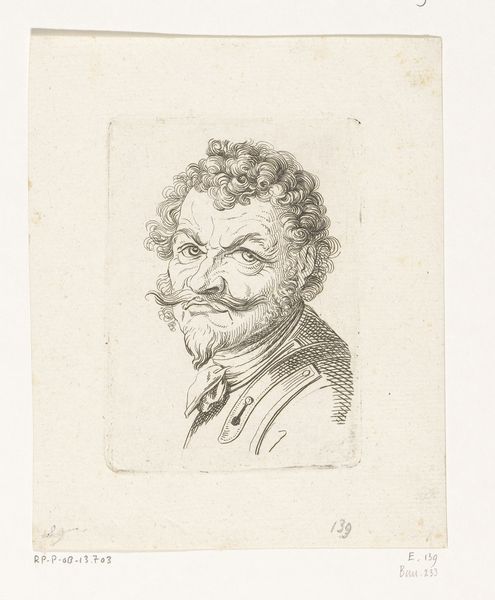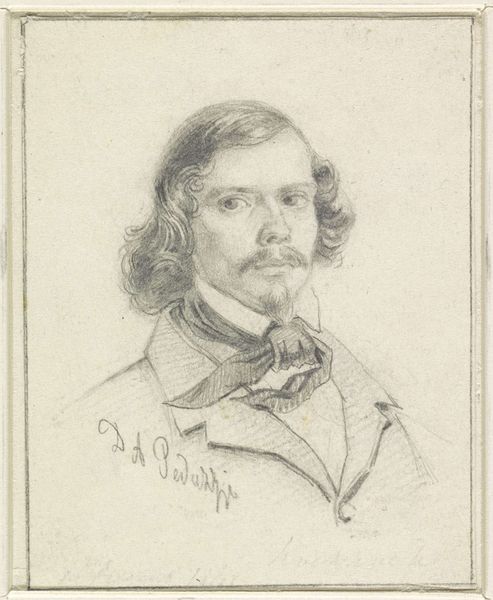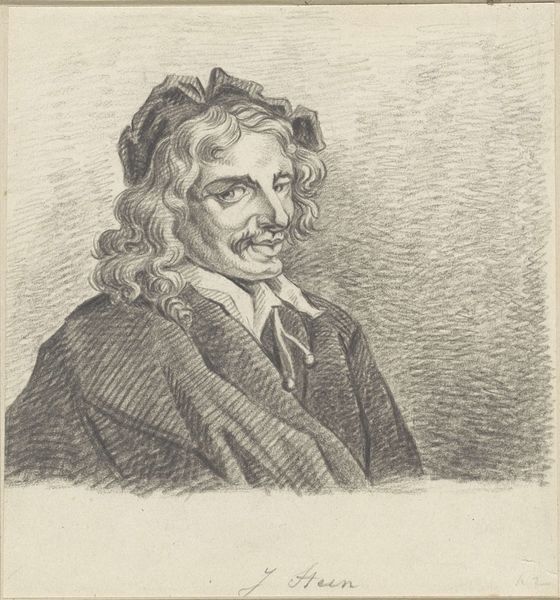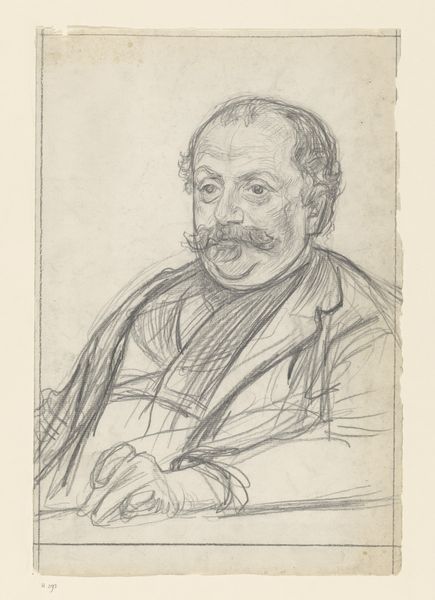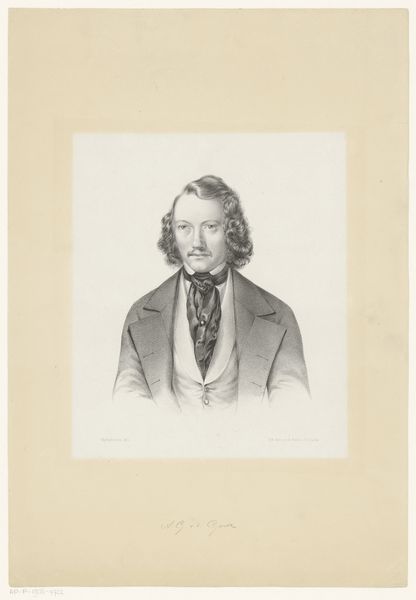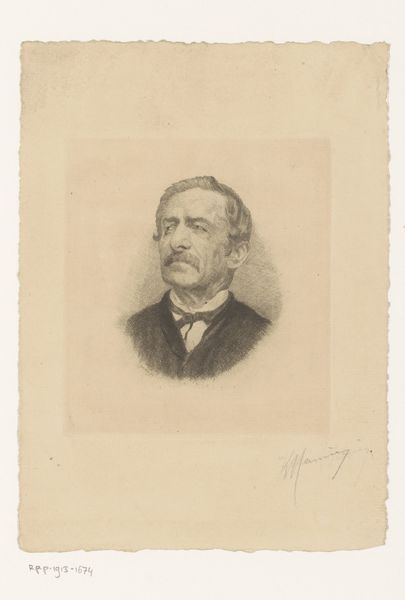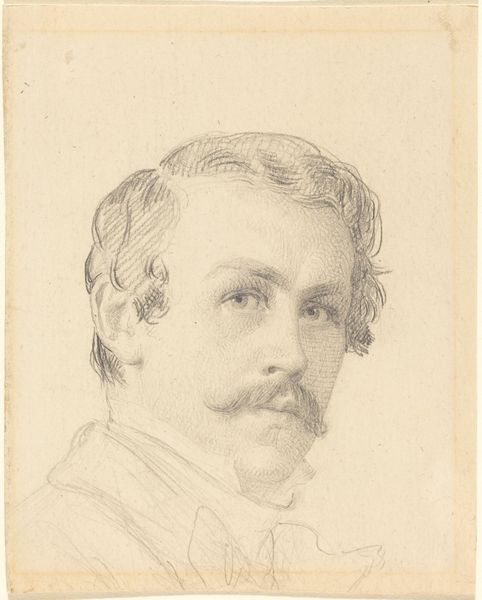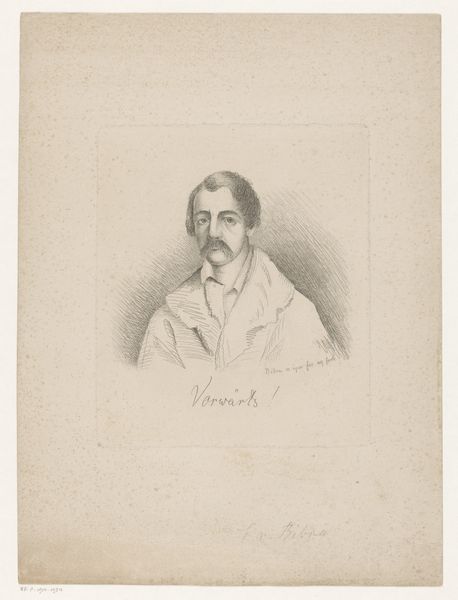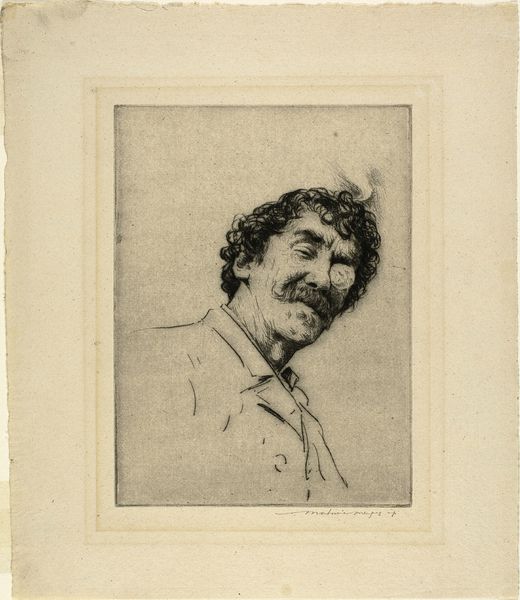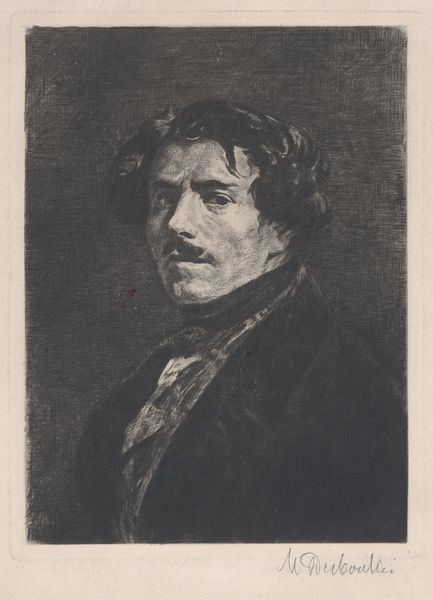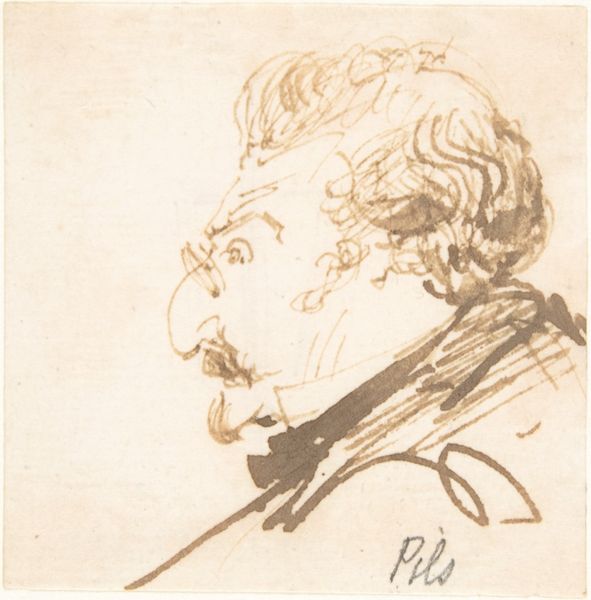
drawing, print, ink, graphite
#
portrait
#
drawing
# print
#
ink
#
pencil drawing
#
graphite
#
portrait drawing
#
realism
Dimensions: plate: 11.11 × 8.57 cm (4 3/8 × 3 3/8 in.) sheet: 24.13 × 17.78 cm (9 1/2 × 7 in.)
Copyright: National Gallery of Art: CC0 1.0
Curator: Wilhelm Leibl's "Portrait of the Painter Wopfner," created around 1873-1874 using ink and graphite, offers a stark, intimate glimpse into the life of a fellow artist. The immediacy is captivating. Editor: My first impression is one of thoughtful weariness, there is an intensity of feeling that emanates from the paper despite its minimalist rendering. I wonder what their relationship was like, that Wopfner would be portrayed with such honesty by Leibl. Curator: Considering the social climate of the time, the portrait embodies Realist principles – an unflinching portrayal free from idealization. In portraying Wopfner, we’re perhaps seeing a reflection of Leibl’s own artistic convictions regarding social truth and objective visual study. Editor: It certainly captures a certain mood. Beyond Realism, I'm also drawn to how this resonates with portrait traditions – the male gaze observing male camaraderie, or maybe professional tension. The symbol of the painter— the "artist"— immortalized by another. It invites considerations of artistic self-image and societal acceptance within artistic circles. Curator: And think about the mustache – a common trope in male portraiture. Is it about virility, strength, perhaps even societal positioning within 19th-century artistic Bohemia? The visual language communicates a certain confident if world-weary status, I think. Editor: I agree that such details create an unspoken script about societal expectations for male artists during that period. It's interesting to contemplate the psychological depth the artists imbued through something as apparently simple as his subject's mustache or browline. What kind of status and identity was the artist signalling to viewers, or more crucially to each other? Curator: In its directness, it embodies that tension between how one views oneself and how one is seen. Looking at the medium of graphite and ink, one has the sense this portrait was drawn from life rather than from a pre-arranged staging, further emphasizing Wopfner's naturalness. Editor: It prompts reflection not only on personal character but also on shared experiences and on the artist's struggle. I leave with a deep appreciation for Leibl's willingness to embrace honesty. Curator: Yes, Leibl seemed keen to mirror truth back to its very source: what a striking record of both inner sentiment and cultural memory contained in an ostensibly simple drawing!
Comments
No comments
Be the first to comment and join the conversation on the ultimate creative platform.
